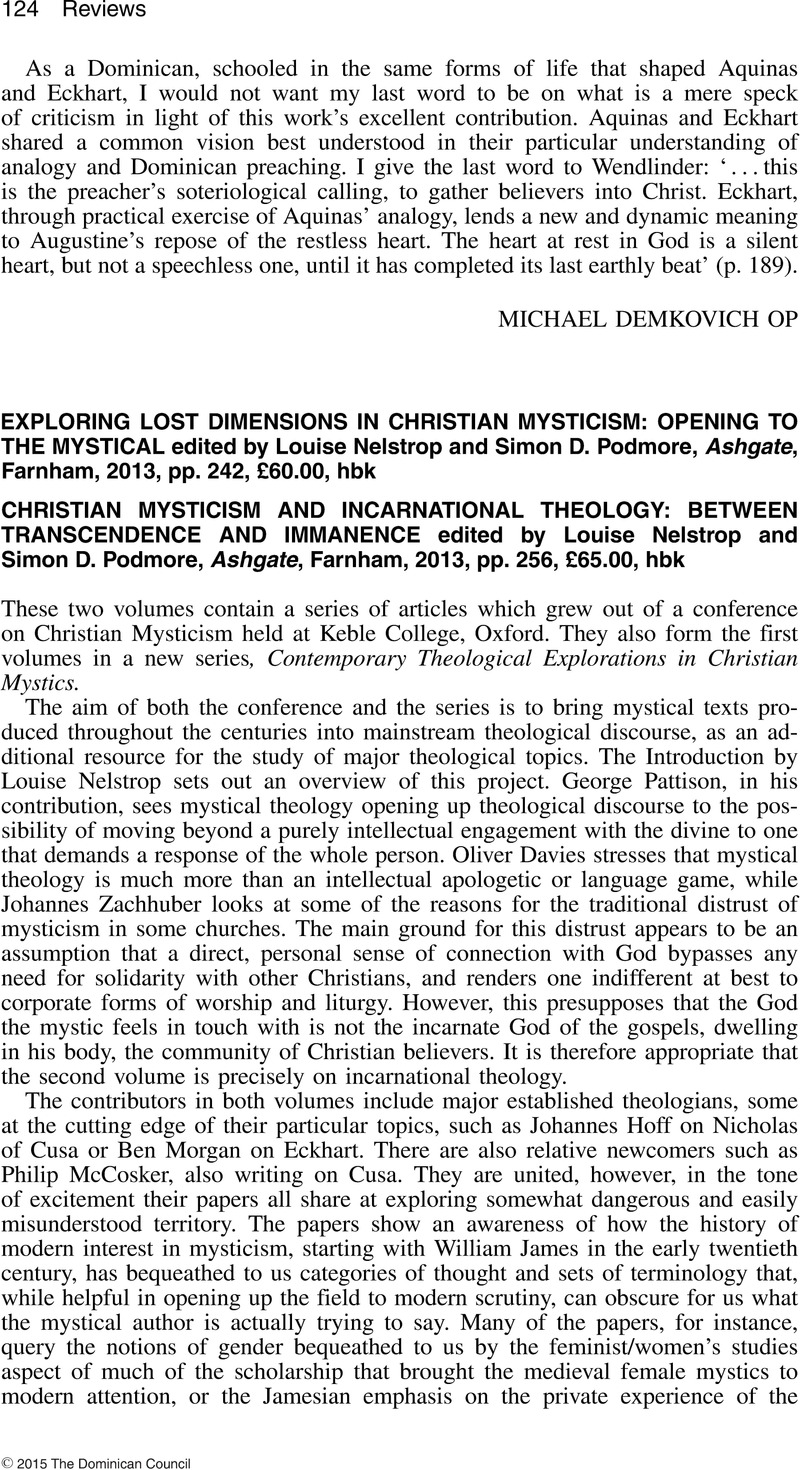No CrossRef data available.
Article contents
Exploring Lost Dimensions in Christian Mysticism: Opening to the Mystical edited by Louise Nelstrop and Simon D. Podmore, Ashgate, Farnham, 2013, pp. 242, £60.00, hbk - Christian Mysticism and Incarnational Theology: Between Transcendence and Immanence edited by Louise Nelstrop and Simon D. Podmore, Ashgate, Farnham, 2013, pp. 256, £65.00, hbk
Review products
Exploring Lost Dimensions in Christian Mysticism: Opening to the Mystical edited by Louise Nelstrop and Simon D. Podmore, Ashgate, Farnham, 2013, pp. 242, £60.00, hbk
Christian Mysticism and Incarnational Theology: Between Transcendence and Immanence edited by Louise Nelstrop and Simon D. Podmore, Ashgate, Farnham, 2013, pp. 256, £65.00, hbk
Published online by Cambridge University Press: 01 January 2024
Abstract
An abstract is not available for this content so a preview has been provided. Please use the Get access link above for information on how to access this content.

Information
- Type
- Reviews
- Information
- Copyright
- Copyright © 2015 The Dominican Council. Published by John Wiley & Sons Ltd

